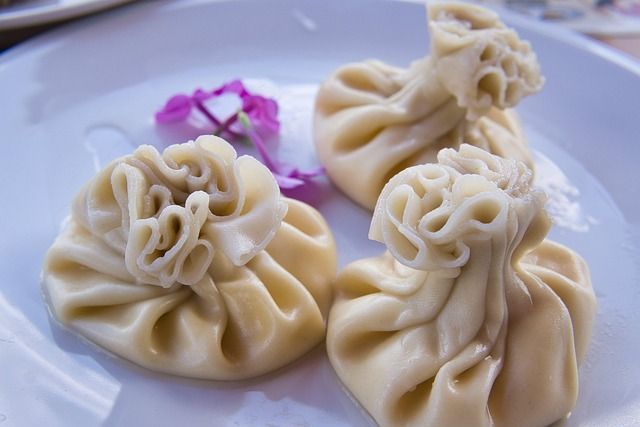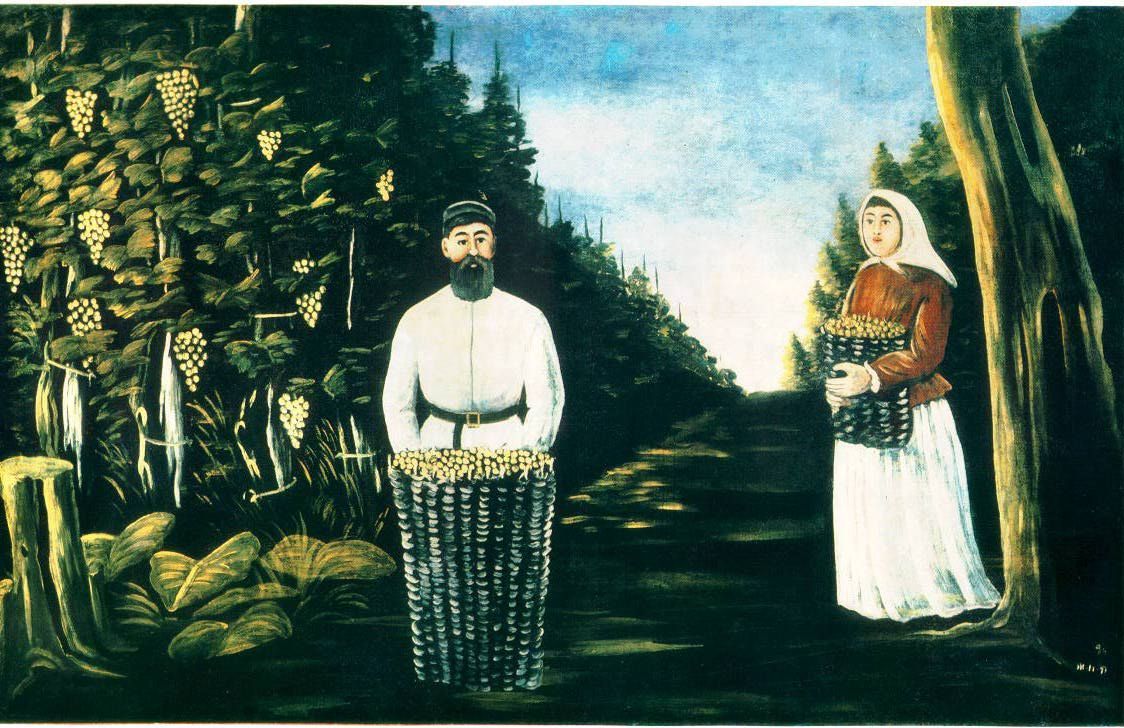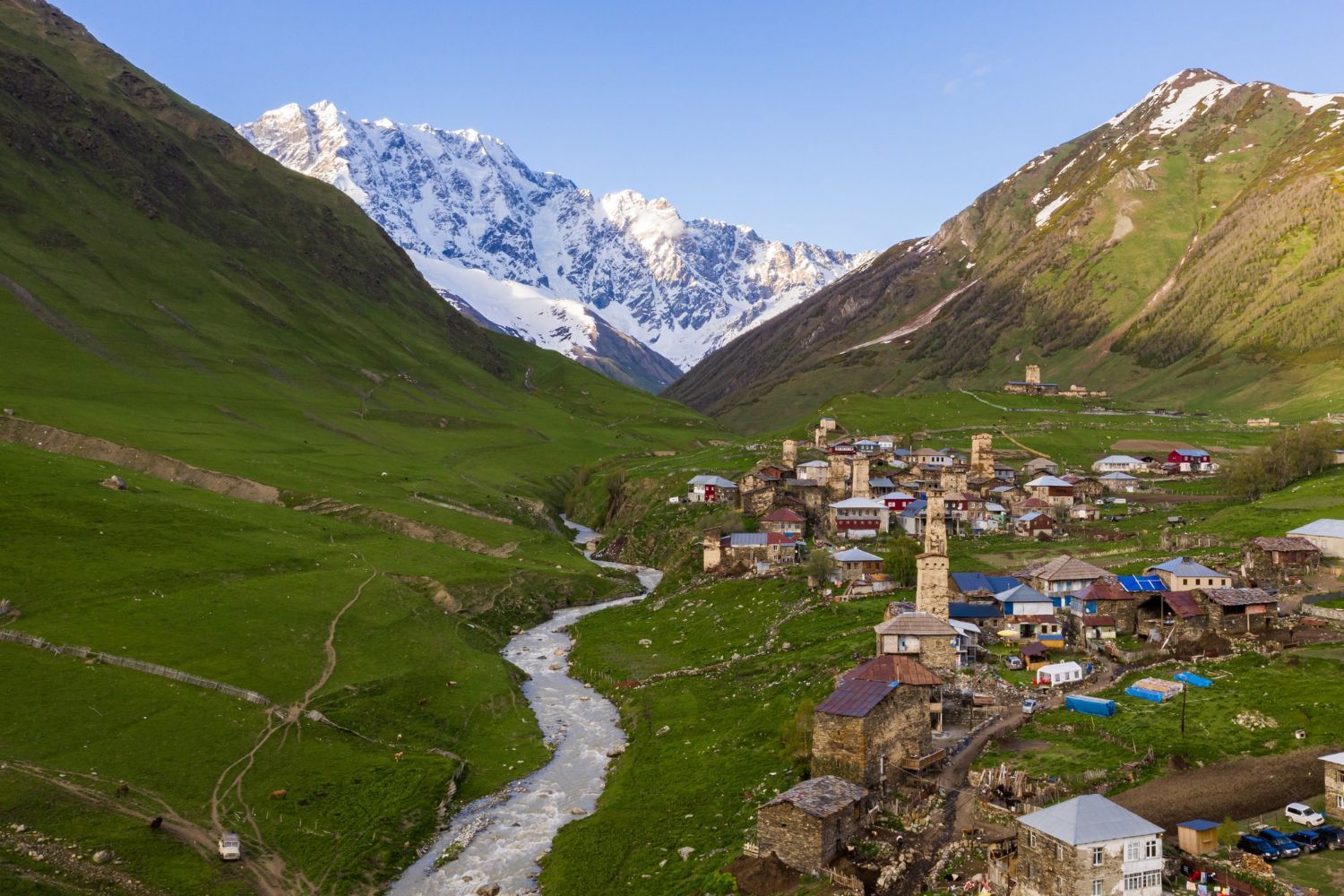From Khinkali to Guda: A Guide to Traditional Georgian Food
Georgia, a country nestled at the crossroads of Europe and Asia, boasts one of the most diverse and flavorful cuisines in the world. Georgian food is a reflection of its rich history, influenced by various cultures while maintaining its unique identity. From hearty breads and succulent meats to aromatic spices and mouth watering cheeses, Georgian cuisine is a true feast for the senses. This guide compiled by Select Georgia will introduce you to the typical Georgian food, ingredients, and customs that define traditional Georgian food.
Select Georgia is a tour agency based in Tbilisi. Whether you seek adventure, cultural exploration, or relaxation, our expert guides will take you to hidden gems and iconic destinations. From mountain hikes and wine tastings to ancient cities and seaside retreats, we cater to every traveler's interest.
The Essence of Georgian Cuisine
Let’s gather more information about the local cuisine.
Georgian cuisine is characterized by the use of fresh and locally sourced ingredients. Staples include meat (especially beef, pork, and lamb), dairy products, nuts, herbs, and an abundance of fresh vegetables. What about bread?
Bread is more than just food in Georgia; it holds cultural, spiritual, and social significance. It is a symbol of hospitality and abundance, served at every meal and always present on the table. Georgian bread is deeply intertwined with tradition, often being part of religious and festive celebrations.
It is hard to discuss the local cuisine without mentioning spices. Interestingly, spices such as blue fenugreek, coriander, garlic, and dried marigold play a vital role in adding depth and complexity to dishes.
Must-Try Georgian Dishes
Let’s take a closer look at some of the most popular dishes.
Food lovers from all over the world are interested in the traditional Georgian food. So, there are many inquiries about the Georgian food Khinkali the best food in Georgia.
1. Khinkali (Georgian Dumplings)
There are many contenders when it comes to the title of a national dish. Khinkali is one of them.
Khinkali are juicy dumplings filled with spiced meat (traditionally beef and pork, but sometimes lamb or mushrooms). The dough is twisted at the top to seal in the rich broth inside. To eat Khinkali properly, one must grab the top, take a small bite, suck out the juice, and then enjoy the rest of the dumpling.
2. Khachapuri (Cheese-Filled Bread)
Khachapuri is one of Georgia’s most famous dishes, often compared to pizza but with a unique twist. The most popular variation is Adjarian Khachapuri, which resembles a boat-shaped bread filled with melted cheese, butter, and a runny egg. Other variations include Imeretian Khachapuri (a round, cheese-filled bread) and Megrelian Khachapuri (similar but topped with extra cheese).


3. Lobio (Bean Stew)
Lobio is a hearty and flavorful dish made from red beans, onions, garlic, coriander, and spices. It is often served in a clay pot and accompanied by cornbread known as Mchadi. Variations include cold Lobio salad and thicker stews.
4. Badrijani Nigvzit (Eggplant Rolls with Walnut Paste)
These elegant appetizers consist of thin slices of fried or roasted eggplant stuffed with a rich walnut paste seasoned with garlic, vinegar, and spices. They are often garnished with pomegranate seeds for a burst of sweetness.
5. Satsivi (Chicken in Walnut Sauce)
Satsivi is a luxurious dish typically prepared for special occasions. It features boiled or roasted chicken covered in a thick, creamy walnut sauce flavored with garlic, coriander, and saffron. The dish is usually served cold.
6. Mtsvadi
We need to mention Mtsvadi when it comes to traditional Georgian dishes. Mtsvadi is Georgia’s version of grilled meat skewers, made from chunks of pork, beef, or lamb. The meat is marinated simply with salt and onions before being grilled over an open flame, giving it a smoky and juicy flavor.
7. Chakapuli (Lamb Stew with Herbs and White Wine)
A springtime favorite, Chakapuli is a tangy and aromatic stew made with lamb, tarragon, green plums (or tkemali sauce), garlic, and white wine. The combination of ingredients gives it a uniquely fresh and sour taste.
8. Churchkhela (Georgian Candy)
Churchkhela is a traditional Georgian sweet made by dipping strings of walnuts or hazelnuts into thickened grape juice and flour, then drying them to form a chewy, nutritious snack. It is often enjoyed during celebrations and as an energy-boosting treat.
Georgian Spices and Sauces
It is worth noting that Georgian cuisine relies heavily on unique spice blends and sauces, such as:
- Adjika – A spicy paste made from chili peppers, garlic, and herbs.
- Tkemali – A tangy plum sauce, typically served with grilled meats.
- Svanetian Salt – A seasoned salt blend from the Svaneti region, made with garlic, coriander, and blue fenugreek.
Georgian Cheese: A Dairy Lover’s Delight
Cheese is an integral part of Georgian cuisine, featured in many traditional dishes and enjoyed on its own. Georgian cheeses vary in texture and flavor, ranging from mild and creamy to salty and firm.
Sulguni
One of the most famous Georgian cheeses, Sulguni is a brined cheese with a firm yet stretchy texture. Sulguni cheese is known for its slightly tangy and salty taste. Sulguni is often eaten fresh or smoked and is a key ingredient in khachapuri.
Imeruli
Imeruli cheese, originating from the Imereti region, is a mild, soft cheese with a slightly sour taste. It is frequently used in Imeretian Khachapuri and pairs well with bread and wine.
Guda Cheese (Don't mix it with Gouda)
A specialty from the mountainous Tusheti region, Guda cheese is traditionally aged in sheepskin, giving it a distinctive earthy flavor. It is often made from sheep's or cow’s milk and is enjoyed as a table cheese.
Tenili
A rare delicacy from the Samtskhe-Javakheti region, Tenili cheese is made using a labor-intensive process where the curd is stretched into thin strands and then aged in clay pots. It has a rich,buttery flavor and unique stringy texture.
Dambalkhacho
A fermented and aged cheese from the mountainous regions, dambalkhacho is one of the strongest-tasting Georgian cheeses. It undergoes a drying and fermentation process that gives it a pungent aroma and deep umami flavor.
Georgian cheese is often enjoyed with fresh bread, fruit, and tkemali (sour plum sauce), and it plays a vital role in the country's culinary identity.
The Supra: A Georgian Feast
Dining in Georgia is not just about the traditional Georgian food—it is an experience. The supra, or Georgian feast, is a centuries-old tradition where families and friends gather around a table laden with dishes, wine, and lively conversation. Every supra has a tamada (toastmaster) who leads heartfelt toasts, often expressing gratitude, wisdom, and humor.
Georgian Wine: A Vital Part of the Culture
Georgia is one of the oldest winemaking regions in the world, with a history of wine production dating back over 8,000 years. The country is known for its qvevri winemaking method, where wine is fermented in large clay vessels buried underground. Some of the most popular Georgian wines include Saperavi (a deep red wine) and Rkatsiteli (a crisp white wine).
Georgian wine comes in a variety of styles, from dry reds and whites to semi-sweet and fortified wines. Some of the most popular varieties include:
- Saperavi – A robust, deep-red wine with a full-bodied, rich taste.
- Rkatsiteli – A crisp and refreshing white wine with floral and citrus notes.
- Kindzmarauli – A naturally semi-sweet red wine with hints of ripe berries.
- Tsinandali – A dry white wine known for its balanced acidity and fruitiness.
Wine is deeply embedded in Georgian culture, often accompanying traditional meals and celebrations. The qvevri method, recognized by UNESCO as an Intangible Cultural Heritage, is a unique process that imparts earthy and complex flavors to the wine.
Many Georgian families produce their own wine at home, and the country’s wine tourism is growing, with visitors flocking to the Kakheti region, Georgia’s main wine-producing area.
Whether enjoyed at a grand supra or a casual gathering, Georgian wine is more than just a drink—it is a symbol of hospitality, tradition, and national pride.
Why Tourists Love Georgian Food
Diverse Flavors – Georgian cuisine blends a variety of flavors, from the rich and creamy texture of khachapuri to the bold and spicy kick of adjika (a traditional Georgian chili paste).
Affordable and Generous Portions – Food in Georgia is not only affordable but also served in large portions, making it a favorite among budget-conscious travelers.
Traditional Dining Experience – Tourists love experiencing the supra, the traditional Georgian feast, where meals are accompanied by heartfelt toasts, endless food, and Georgian polyphonic singing.
Wine Culture – Georgia is considered the birthplace of wine, and many tourists visit vineyards in Kakheti to taste traditional Georgian wines made using the qvevri method.
Authenticity and Fresh Ingredients – Traditional Georgian food is known for its fresh, locally sourced ingredients, making every dish flavorful and authentic.
Conclusion
Georgian cuisine is a reflection of the country's history, geography, and deep-rooted traditions. Whether you’re indulging in a warm Khachapuri, savoring a plate of Mtsvadi, or raising a glass of Georgian wine at a supra, the flavors and hospitality of Georgia will leave a lasting impression.
Select Georgia is here for you! Our dedicated team is ready to guide you on a culinary journey, helping you explore the rich and diverse flavors of Georgian cuisine.










